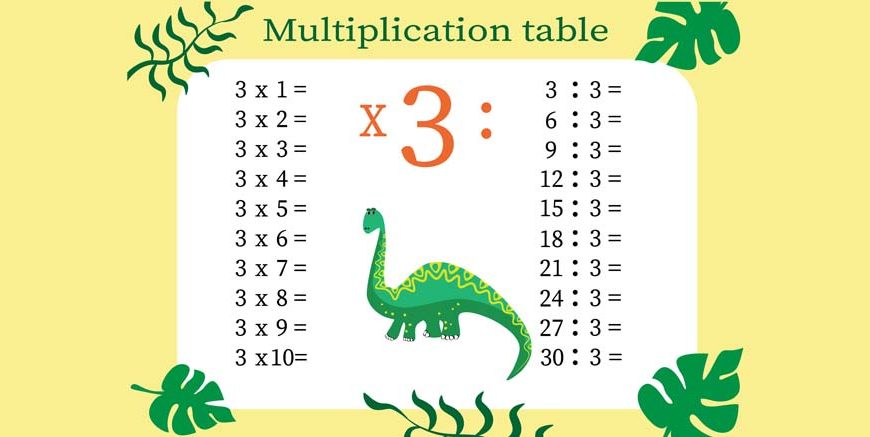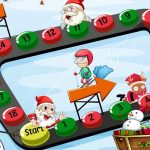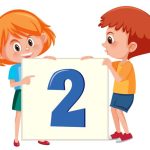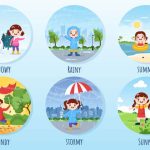Introducing numbers and multiplication at a young age can set a strong foundation for lifelong mathematical understanding. For pre-primary children, learning multiplication begins with curiosity and play. The table of 3 for kids is one of the first steps towards mastering basic arithmetic in a fun and engaging way.
At EuroKids, the approach to early mathematics is centred around joyful learning. Children are encouraged to explore patterns, rhythms, and relationships between numbers rather than memorising them. With the right support, tools, and fun worksheets, even the multiplication table of 3 can become a favourite classroom activity.
This guide introduces simple ways to teach the table of 3, complete with worksheets, charts, and playful activities designed for preschool and kindergarten children.
Understanding the Table of 3: The Foundation of Early Math Skills
Before diving into worksheets or games, it’s important to help children understand what multiplication means. The table of 3 in English introduces the idea of repeated addition, adding 3 multiple times to get a total.
For example:
- 3 × 1 = 3
- 3 × 2 = 6
- 3 × 3 = 9
- 3 × 4 = 12
- 3 × 5 = 15
- 3 × 6 = 18
- 3 × 7 = 21
- 3 × 8 = 24
- 3 × 9 = 27
- 3 × 10 = 30
Children often grasp this better through tangible examples. Counting toys, snacks, or blocks in sets of three helps make the table of 3 for kids easy to visualise.
Read More – Counting Rhymes for Kids
Simple Ways to Teach the Table of 3 to Preschoolers
Learning the table of 3 doesn’t need to feel like studying. At the pre-primary level, young learners absorb information through sound, rhythm, and action. Here are a few creative ways to make it enjoyable:
1. Use Rhymes and Songs
Turn multiplication into music! Singing the multiplication table of 3 with a simple tune helps children remember it quickly. Rhymes with rhythm make learning feel like playtime.
2. Build with Blocks
Ask your child to make groups of three using building blocks or toys. Visualising the sets helps them understand how multiplication works.
3. Storytelling through Numbers
Turn each equation into a small story. For example: “Three kittens each have three toys — how many toys do they have in total?” Such stories make numbers meaningful.
4. Counting with Movement
Encourage children to jump, clap, or hop while counting by threes. This not only makes the table of 3 for kids interactive but also supports coordination and memory.
5. Everyday Math Moments
From counting fruits at home to sharing snacks, parents can include multiplication in daily conversations. Practical examples make abstract concepts feel natural.
Read More – Nurturing Young Minds through Playful Learning
Table of 3 Chart for Easy Learning
A table of 3 chart for kids can be an effective visual learning tool. It allows children to see the pattern of numbers and notice how the results increase steadily. Displaying the chart in a classroom or study area encourages independent practice.
Here’s a simple table of 3 in English for quick reference:
Multiplication | Answer |
3 × 1 | 3 |
3 × 2 | 6 |
3 × 3 | 9 |
3 × 4 | 12 |
3 × 5 | 15 |
3 × 6 | 18 |
3 × 7 | 21 |
3 × 8 | 24 |
3 × 9 | 27 |
3 × 10 | 30 |
Charts like these also make it easy for parents to revise the table of 3 during short study breaks.
Read More – Table of 4 for Preschool Kids
Fun Worksheets: Practice through Play
Learning through repetition is essential for early math success, but repetition doesn’t need to be dull. Table of 3 worksheets make practice fun and interactive.
Here are some types of worksheets designed for pre-primary children:
- Colour-the-Correct-Answer Sheets – Children solve a problem, then colour the correct answer from a set of options.
- Matching Worksheets – Match problems like “3 × 4” to answers like “12.”
- Missing Numbers – Help children fill in blanks like “3 × _ = 15.”
- Tracing Worksheets – Allow children to trace the numbers to strengthen their writing and number recognition.
These tables of 3 worksheets combine visual learning, fine motor skill development, and number familiarity, all key parts of the EuroKids approach.
Interactive Activities to Learn the Table of 3
Activities bring abstract mathematical concepts to life. Here are some engaging ideas for teaching the table of 3 for kids through play and discovery:
1. Hopscotch Multiplication
Draw a hopscotch grid with numbers from the multiplication table of 3. Each time your child lands on a number, ask them to recite the equation aloud.
2. LEGO Maths
Use LEGO pieces in groups of three. Build small towers to represent 3 × 2, 3 × 3, and so on. Visual grouping helps children internalise the power of 3 table patterns.
3. Flashcard Race
Flashcards are great for quick recall. One side shows “3 × 5,” and the other shows “15.” Make it a timed challenge for extra excitement.
4. Multiplication Bingo
Create a bingo sheet with products from the table of 3. Call out equations, and children can mark the matching number.
5. Table of 3 Song Time
Use a familiar tune like “Twinkle Twinkle Little Star” to sing the table of 3 in English together. Music aids long-term retention.
When maths turns into play, children develop curiosity and confidence naturally.
Read More – Unlocking Pre-Math Concepts for Preschoolers
EuroKids’ HEURĒKA Curriculum: Learning Through Exploration
At EuroKids, learning maths goes far beyond memorisation. The HEURĒKA Curriculum
focuses on experiential and inquiry-based learning, encouraging children to understand why numbers work the way they do.
This unique curriculum nurtures critical thinking, logical reasoning, and hands-on problem-solving. When teaching concepts like the table of 3, teachers at EuroKids use:
- Story-based learning
- Real-life applications
- Visual patterns and manipulatives
- Group-based discussions
The HEURĒKA Curriculum aligns with EuroKids’ mission of “Play, Learn, and Grow”, ensuring every child enjoys their learning journey while developing strong foundational skills.
Why Early Math Learning Matters
Introducing multiplication tables like the table of 3 early offers long-term benefits. Preschoolers who grasp numbers through play develop stronger numeracy, better focus, and analytical thinking skills.
Learning the multiplication table of 3 helps children recognise number patterns, promotes logical reasoning, and lays the groundwork for higher mathematics in later years. When these skills are taught through interactive methods, children gain confidence, curiosity, and creativity.
Read More – Fun Math Activities for Kindergarten
Tips for Parents and Teachers to Reinforce the Table of 3 at Home
Parents and teachers play an equal role in making maths approachable. Here are a few practical ways to support learning at home:
- Make It a Game: Use flashcards, puzzles, and number hunts.
- Use Positive Reinforcement: Celebrate small achievements to build motivation.
- Incorporate Multiplication into Daily Life: Ask questions like, “If we have 3 plates and each plate has 3 apples, how many apples are there?”
- Set a Routine: Short, daily practice works better than long, infrequent sessions.
- Be Patient and Encouraging: Learning takes time; every child learns at their own pace.
Such approaches make the table of 3 for kids more than just a lesson, it becomes part of their everyday world.
Admissions at EuroKids: Building Bright Beginnings
EuroKids is more than a preschool; it’s a space where curiosity meets structured learning. Through its HEURĒKA Curriculum, EuroKids integrates real-world problem-solving, creativity, and play into early education.
Parents looking to enrol their child in a nurturing environment can explore EuroKids admissions at a nearby centre. With a focus on foundational literacy, numeracy, and emotional development, EuroKids ensures that every child gets the best start to their educational journey.
To learn more about EuroKids programmes, visit their admissions page and explore how your child can Play, Learn, and Grow every day.
Read More – Mental Math Strategies for Students
FAQs
1. What is the easiest way to teach the table of 3 to kids?
Start with real-life examples and visual grouping. Teaching with stories, songs, and hands-on activities makes it easier for children to remember.
2. How can parents make multiplication fun at home?
Turn learning into play. Use blocks, flashcards, or even daily objects like fruits and spoons to practice multiplication in simple ways.
3. At what age should a child start learning tables?
Children usually begin exploring multiplication around 5–6 years of age when they can grasp patterns and number relationships.
4. How does EuroKids make maths easy for preschoolers?
EuroKids integrates maths with play-based learning, songs, and interactive exercises. The HEURĒKA Curriculum helps children learn through experience and discovery.
5. What makes the HEURĒKA Curriculum different?
It focuses on conceptual clarity, hands-on activities, and exploration-based learning rather than rote memorisation.
Related Blogs
Natural Numbers – Concepts, Properties and Number Line
Help your child understand the foundation of mathematics by exploring what natural numbers are, their key properties, and how to represent them on a number line, explained in a simple, engaging way for young learners.
Engaging Number Activities for Preschool & Kindergarten
Discover creative and playful number activities that make learning fun. From counting games and craft ideas to interactive group tasks, these activities will keep little minds curious and active.
Exciting Ways to Help Kindergarten Kids Learn Number Formation
Learn how to make number formation enjoyable for your kindergartener with hands-on methods like tracing, sand writing, and colourful visual cues.















